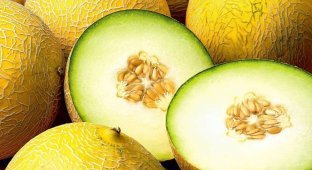They are sold in special supermarkets where everything is made of marble and stone, there are crystal chandeliers on the ceiling, and the sellers are dressed to the nines. It looks like a boutique or a Tiffany jewelry store, but in reality it is a grocery store with fruits. 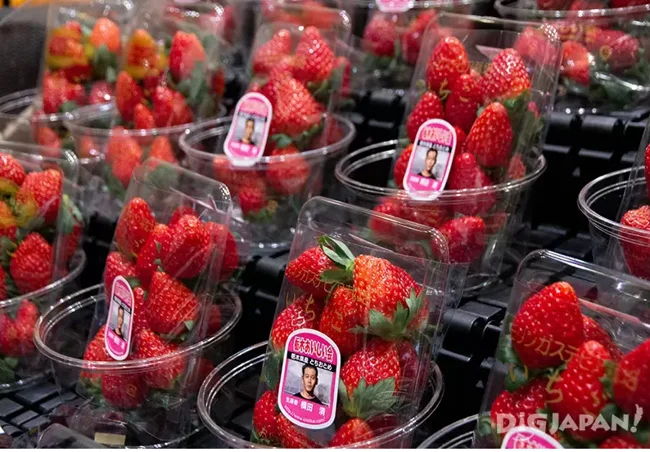
Strawberries with a photo of the farmer. Somehow I didn't get into it
Perfectly round melons, flawless bunches of grapes the size of a child's fist, everything is incredibly beautiful. And very. Very. Very, very expensive.
The news that Japan grows super-expensive fruits is not surprising. Everyone knows and has even seen a couple of photos of a square watermelon or other perversions. What is more fascinating is the question of why the Japanese started doing this, and most importantly - does it really pay off? Are so many crazy people buying fruit for a hundred thousand? 
The seller of a melon for 50 thousand looks at the weight with slight disdain
What are such fruits for?
Of course, not to eat in the evening after work. This is a special kind of gift.
In Japan, it is generally customary to give gifts, bottles of good sake, for example. But if it is not always appropriate to bring alcohol to business meetings, then almost everyone can have a luxury fruit.
This is a way to show your status through food. "I can give a peach for fifty thousand each." Like expensive cars, to show your status. Only fruits. 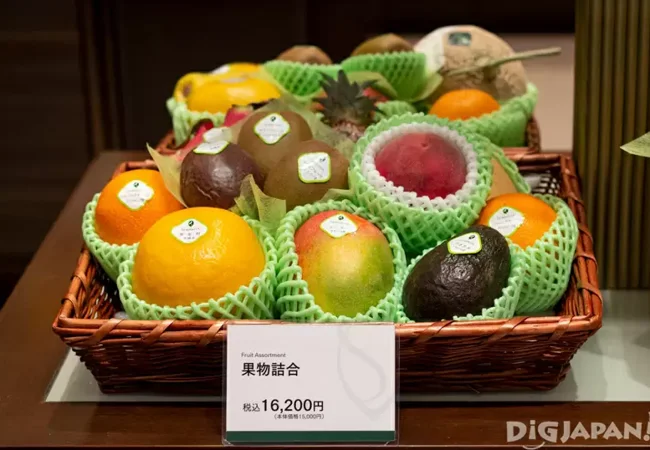
The expensive avocado is somehow already feeling bad
Also, sometimes people buy such fruits for their birthday. You can buy branded dresses and shoes, but where to store them in small Japanese apartments? And you want luxury. So they treat themselves to "branded" things, that is, fruits.
Two gift seasons
It is generally very interesting that in Japan there are gift seasons - summer (chugen) and winter (seibo). During this period, you can give a gift to anyone you feel grateful to. That is, parents, teachers, even a mentor at work.
And since seasonal fruit is the best embodiment of the idea of the season itself, giving them seems most appropriate. Such a complex concept, but the Japanese are okay with it. 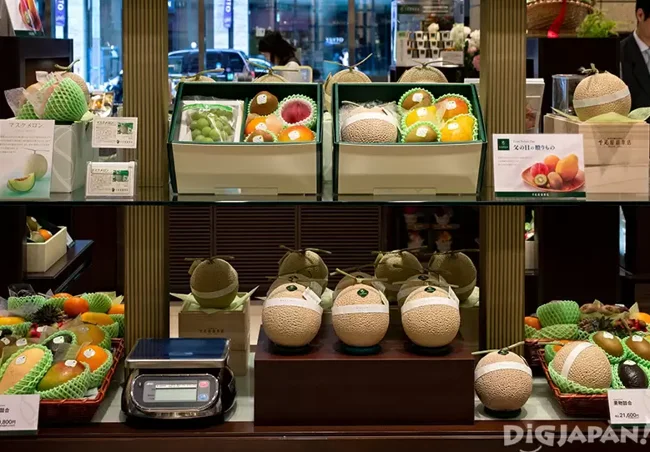
If you drop it on the floor, you will never pay for it. Let's go try on jewelry!
This fruit seems to help you taste summer – remember it by its aroma and color. How to give a little summer, and you can’t put it off for long. Fruits spoil, so the recipient will definitely enjoy them and won’t give them away again.
You are my god!
In the Buddhist religion in Japan, fruits were often used as an offering to the gods. And giving a fruit to a person means slightly equating him with the one you worship. And if it’s a fruit worth a hundred thousand, then you worship it not just a little, but a lot. 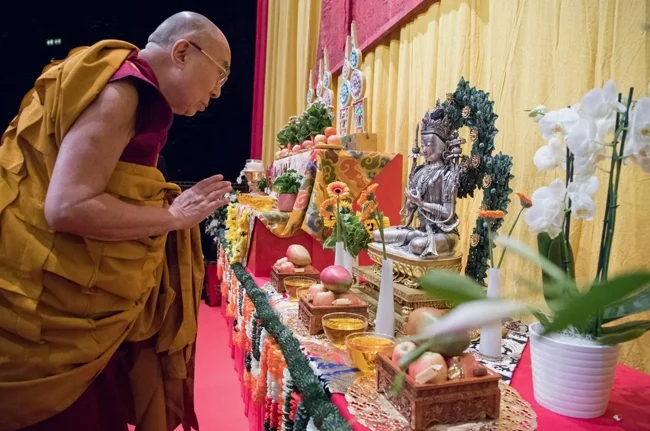
As you can see, the gods love mangoes. Who doesn’t!?
First meal – with the eyes
If you have seen the shelves in Japanese stores, you have probably noticed that the fruits there are often one to one. Peaches are placed in individual packages, not in bulk. And in general, they look much better than in our supermarkets. 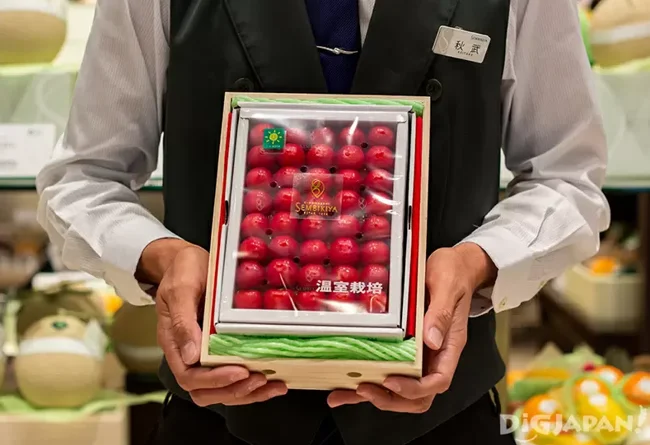
Luxury Japanese cherries cost as much as a Boeing wing
Because before eating with their mouths, the Japanese enjoy the fruit with their eyes, anticipating its taste. That is, even small stores try to play up the luxury of fruits as best they can.
Why are luxury fruits so expensive?
Why such an exorbitant price for a simple food? The answer is in the growing process.
Luxury fruits must look perfect, have the right shape, and taste delicious. These high standards are often achieved
By growing not by large companies, but by private farmers in different parts of Japan who strictly monitor the conditions. 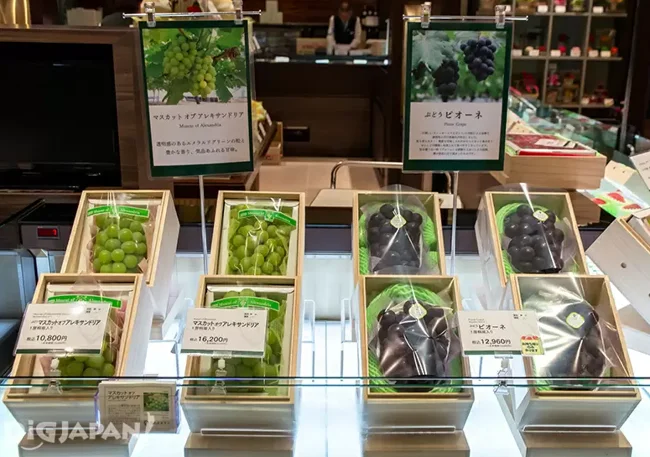
Grapes with information sheets about the variety, place, taste, farmer
One of the most expensive products in high-end stores - Taiyo no Tamago mango, costs a whopping 27,540 yen each!
Local Japanese farmers also often develop their own unique variety of fruit, which is considered authentic only if grown in that specific place.
Some even pollinate the flowers by hand with a brush, put a hat on each fruit so that it does not get sunburned. And other subtleties.
In such luxury stores, each fruit has an information sheet explaining where it was made and even the name of the person who created the variety. Often accompanied by a detailed description of the taste, like on a bottle of expensive wine. 
Because a crouton can't cost $8, but a crouton can
This attitude towards fruit is, of course, a very bright and original part of Japanese culture. But I don't like it at all. It's better to have ten kilograms of inexpensive cherries than 300 grams. The opposite of this is Thailand, where there are hundreds of fruits on the stalls, and not very pretty ones either. Because – suddenly – ugly ones are also tasty, sometimes tastier than perfect ones.
Add your comment
You might be interested in:












